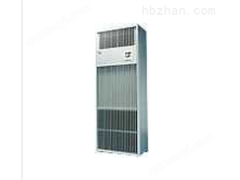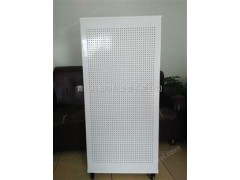>Dust Control
Industrial dust control often uses dust collectors to control the industrial dust and smoke that have been produced. According to the dust collection mechanism, it can be divided into mechanical dust collectors, electric dust collectors, filter dust collectors and washing dust collectors.
>Characteristics of Dust Pollution
Industrial dust usually refers to dusty industrial waste gas or mechanical processes such as crushing, screening, transportation, blasting, etc. produced during the processing of solid materials, or produced from combustion, high-temperature melting and Chemical reactions and other processes. Based on years of engineering experience in dust control, the Environmental Measurement and Control Optimization Research Center of the China Academy of Building Sciences concluded that the former contains dust with large particle size and the same chemical composition as the original solid matter, while the latter contains dust with small particle size and chemical properties similar to those of the substances that generated it. For other smoke and dust, the generation of particulate matter can be reduced by improving production processes and combustion technologies.
These various industrial dusts that are often emitted during the industrial production process will destroy the air environment in the workshop, endanger the health of operating employees, damage workshop machinery and equipment, and the emissions will also pollute the atmospheric environment and cause social nuisance. Therefore, in order to control and handle industrial dust, improve the air environment in workshop operations and prevent atmospheric pollution, it is necessary to understand the source of industrial dust and its hazards, and take various measures to control industrial dust so that employees' work sites can meet hygienic standards and be environmentally friendly. The facility’s emissions meet emission standards.
>Sources of dust
>The causes of industrial dust are as follows
The mechanical crushing and grinding process of solid materials, such as crushers and ball mills in mineral processing, refractory materials and foundry workshops, etc. of dust.
The mixing, screening, transportation and packaging process of powdery particulate materials
Incomplete combustion or explosion of materials, such as a large amount of smoke and dust mixed in boiler flue gas
>Dust control
Comprehensive dust suppression technology mainly includes key technologies such as Biomedikon bionano membrane dust suppression technology, cloud dust suppression technology and wet dust collection technology.
Bionano film dust suppression technology. Bionano film is a double ionization layer membrane with a nanometer-level spacing. It can maximize the ductility of water molecules and has strong charge adsorption to spray the bionano film on the material. The surface can attract and agglomerate small dust particles, causing them to aggregate into large dust particles, which will settle as their own weight increases. The dust removal rate of this technology can reach up to above, and the average operating cost is/ton.
Cloud dust suppression technology uses high-pressure ion atomization and ultrasonic atomization to produce ~ ultra-fine dry mist. Ultra-fine dry mist particles are very dense, fully increasing the contact area with dust particles, and preventing water mist particles from colliding with dust particles. And condense to form agglomerates. The agglomerates continue to grow larger and heavier until they finally settle naturally, achieving the purpose of eliminating dust. The dry mist particles produced have a particle size of ~ below, and have obvious prevention and control effects on atmospheric fine particle pollution.
Wet dust collection technology absorbs dust-attached air through pressure drop, and removes dust under the dual effects of centrifugal force and the mixing of water and dust gas. The unique impeller and other key designs can provide higher dust removal efficiency.
Suitable for bulk material production, processing, transportation, loading and unloading, such as mines, construction, quarries, yards, ports, thermal power plants, steel plants, garbage recycling and other places. []
>Government methods
Mechanical dust collectors rely on mechanical force to remove dust particles from the air flow. They have a simple structure and low equipment and operating costs, but the dust removal efficiency is not high. Electrostatic precipitators use static Electricity realizes the separation of dust particles and airflow. There are basically two types of electrostatic precipitators: plate-type electrostatic precipitators and tube-type electrostatic precipitators. The airflow resistance of electrostatic precipitators is small and the dust removal efficiency can reach above. The initial investment of electrostatic precipitators is relatively high and the floor space is large. The filter bag dust collector causes the dust-laden airflow to pass through the bag filter material to separate and capture the dust particles. The dust removal efficiency is generally high. However, due to the temperature resistance of the bag filter material, it is sometimes not suitable for dust containing high temperatures. The industrial waste gas scrubbing dust collector uses liquid (usually water and organic solvents) to wash dust-containing industrial gases, so that dust particles collide with liquid droplets or liquid films to be captured and separated from the air flow. The dust removal efficiency is ~, the operating cost is high, and the absorption The waste liquid that comes down needs to be recycled or processed for secondary treatment.
In short, the principle of industrial dust control is to improve the process and reduce the amount of industrial dust generation on the one hand, and to increase the dust collection efficiency on the other hand.
In addition to dust collectors, different dust-generating points need to adopt suitable dust removal solutions based on the actual conditions of the site. Other commonly used dust removal methods include
) bionanofilm dust suppression
bionano The membrane is a double ionization layer membrane with a nanometer-scale interlayer spacing, which can maximize the ductility of water molecules and has strong charge adsorption. The bionano membrane is sprayed on the surface of the material and can attract and agglomerate small particles of dust to aggregate. into large granular dust particles, which will settle as their own weight increases
) Cloud dust suppression
It can produce ultra-fine dry mist through high-pressure ion atomization and ultrasonic atomization. Ultra-fine dry mist particles are fine and fully Increase the contact area with dust particles. Water mist particles collide with dust particles and condense to form agglomerates. The agglomerates continue to grow larger and heavier until they finally naturally settle, achieving the purpose of eliminating dust
) Wet dust collection
It absorbs air with dust attached through pressure drop, and removes dust under the dual effects of centrifugal force and the mixing of water and dust gas. The unique impeller and other key designs can provide higher dust removal efficiency.
) Spray dust reduction system
The spray dust reduction system can solve the on-site dust removal of dumpers, material yards, material sheds, belt conveyor transfer points, vibrating screens, and unloading points. Spray dust removal includes high-pressure water mist dust suppression and dry mist dust suppression. Dry mist dust suppression has very little impact on the humidity of the material. It is suitable for materials that are sensitive to water, or materials where the owner has relatively high requirements for increasing the humidity of the material.
) Dust suppression scheme at the transfer point
When the material falls on the belt conveyor, dust will be separated from the conveyed material and spread to the surroundings. This situation occurs especially between the transfer points of the conveyor, where vibrations and impacts occur. With the increasing environmental protection requirements, how to minimize the dust problem generated by belt transportation has become a more urgent issue.
Impact bed
Buffer bed
Sealed skirt
Belt conveyor transfer point dust collector
) Intelligent dust-free loading system
Whether it is materials in the open air In the field, material shed or silo, and when materials are loaded from silos to trucks, and materials are unloaded from belt conveyors or silos, the height difference causes the materials to generate large amounts of dust at the unloading point. The greater the height difference, the more serious the dust pollution caused.
In response to this problem, foreign
manufacturers have developed and produced intelligent dust-free loading systems, which are efficient, durable and trouble-free. They are suitable for the finest dust materials to coarse granular materials and can meet various complex requirements in the world. Technical requirements for cargo loading in environmental conditions. In addition, for some products that require high material quality during the falling process, such as coal, coke, and seeds, avoid breaking them to reduce quality and affect efficiency. The automated loading system we provide can avoid on-site dust pollution, reduce the limit rate, increase corporate efficiency, and the system is stable. It has been widely used in Europe.
Main advantages
●Reduce dust by 10 times, save cleaning costs, improve working environment hygiene, and avoid environmental pollution
●Achieve automated unloading, high loading accuracy and efficiency, reduce labor costs, automated system Stable working performance, minimizing maintenance costs
●Saving costs due to material loss, some production is affected by climate (wind loses about 10% of material during the bulk process
●Guarantee the falling direction of the material, ensuring that the material Original quality to avoid material quality changes caused by too much impact when falling
●Specialized design and customization can be provided according to your company's requirements, modular production, high configuration and high reliability
●Used in automobiles , the loading of trains, silos, material yards, etc., can be designed to connect belts, silos, etc. to achieve the best effect of material unloading.
●Comply with
●Explosion-proof design.
) Spray device /Atomizer Cannon
The spray device itself consists of a ventilator, diffuser, circular ramp and nozzle. A bracket supports the spray unit so that it can be positioned stably both vertically and horizontally. If automatic rotation is required, the spray device can be driven by a drive unit. The spray device can also be attached to a tall auxiliary pole to improve work efficiency.
Scope of application
●Dust control of coal, ore stockyards and other loose materials in open air or closed silos. Spray dust reduction and cooling in ports, docks and other yards. As well as spraying equipment for dust suppressants in coal, fly ash and other stockyards
●Belt conveyor (transfer point)
●Dust control for demolition and blasting projects, construction sites, and road dust
● Dust control and disinfection in garbage dumps, large-area sterilization and epidemic prevention after natural disasters
●Dust control from sandblasting operations in shipbuilding, ship repair, and machinery industries
Hebei Jisheng Environmental Engineering Co., Ltd. is the first choice for environmental management , can provide you with customized technical and service support belonging to our company.
Contact person Gao Qian
Contact number
Mobile phone






 Ducted Air Purifier ¥1000.00/
Ducted Air Purifier ¥1000.00/
 Processing FFU air p¥1000.00/
Processing FFU air p¥1000.00/
 Professional spray t¥1.00/
Professional spray t¥1.00/
 Henan spray tower pa¥1.00/
Henan spray tower pa¥1.00/
 Is it effective to tNegotiable
Is it effective to tNegotiable
 Manufacturer special¥80.00/
Manufacturer special¥80.00/
 Industrial dust remo¥3080.00/
Industrial dust remo¥3080.00/
 Silicon carbide desu¥120.00/
Silicon carbide desu¥120.00/
 Key points of semi-d¥120000.00/
Key points of semi-d¥120000.00/



 Year1
Year1




 WhatsApp
WhatsApp





